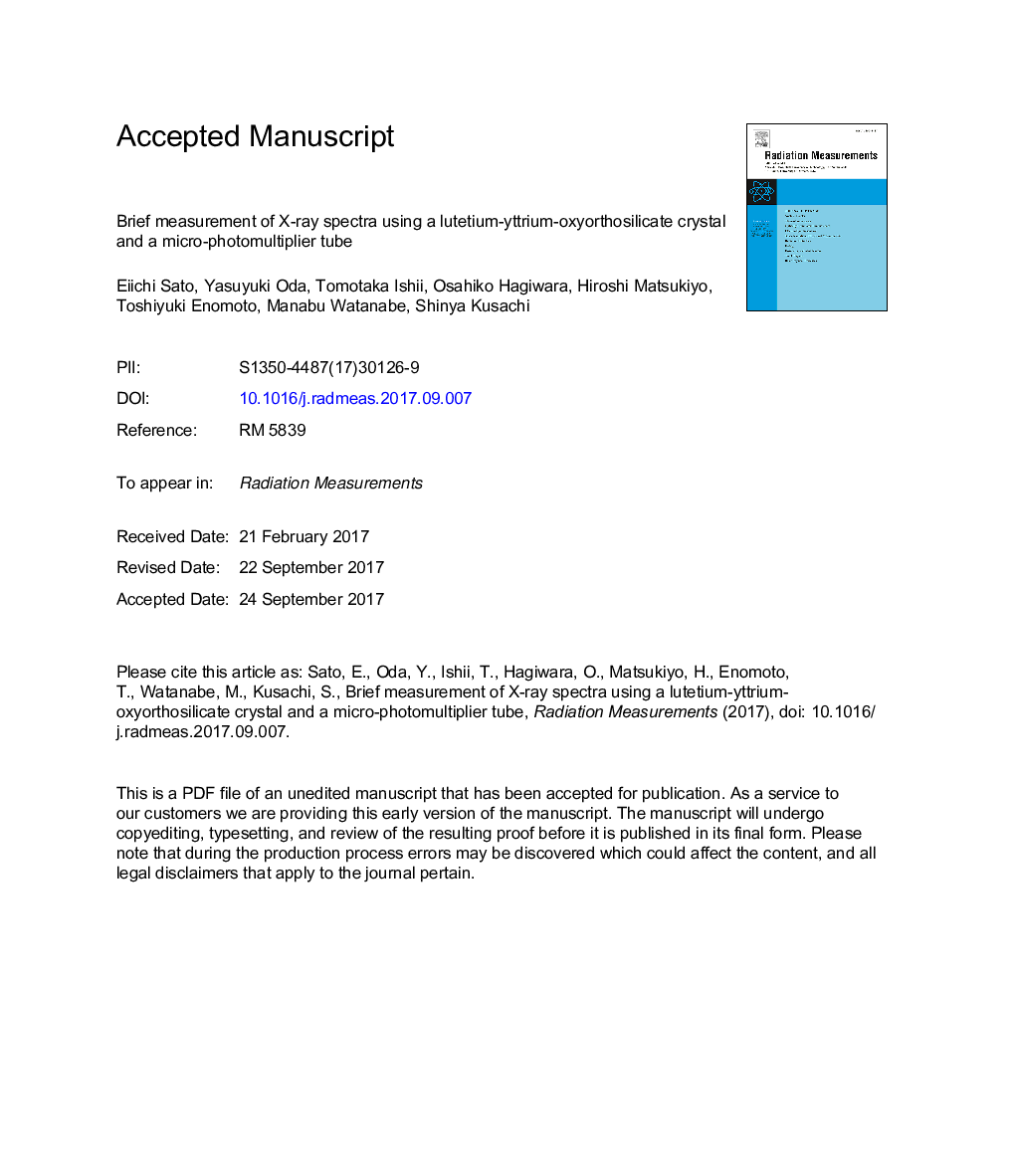| Article ID | Journal | Published Year | Pages | File Type |
|---|---|---|---|---|
| 8250033 | Radiation Measurements | 2017 | 28 Pages |
Abstract
Brief measurement of X-ray spectra using a detector, consisting of an LYSO [Cerium doped Lutetium Yttrium Oxyorthosilicate, (Lu,Y)2SiO5:Ce] crystal and a μPMT (micro-photomultiplier tube) is described. X-ray photons are detected using the LYSO crystal and a 0.5-mm-diameter 3.0-mm-thick lead pinhole, and scintillation photons produced in the crystal are detected using the μPMT. The negative output voltages from the μPMT are input to a high-speed inverse-voltage-voltage amplifier, and the event pulses from the amplifier are sent to a multichannel analyzer to perform pulse-height analysis. Dark counts from the μPMT are not counted at all by increasing the time constant of the amplifier. Without the pinhole, the energy resolutions was approximately 40% at 59.5 keV. The photon energy was determined using two-point calibration using iodine-Kα fluorescence and tungsten Kα-photons from an X-ray-tube target. At a tube voltage of 100 kV, the maximum tube current without event-pulse pileups was 0.24 mA. Using the LYSO-μPMT detector, both the maximum and maximum-count energies increased with increasing tube voltage, and the maximum count rate was 72 kilocounts per second at a tube voltage of 100 kV and a current of 0.24 mA. Dual-energy computed tomography utilizing K- and L-edges was accomplished using gadolinium contrast media.
Keywords
Related Topics
Physical Sciences and Engineering
Physics and Astronomy
Radiation
Authors
Eiichi Sato, Yasuyuki Oda, Tomotaka Ishii, Osahiko Hagiwara, Hiroshi Matsukiyo, Toshiyuki Enomoto, Manabu Watanabe, Shinya Kusachi,
